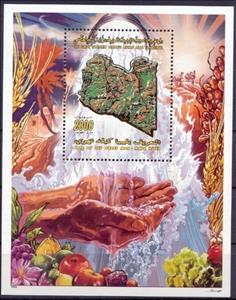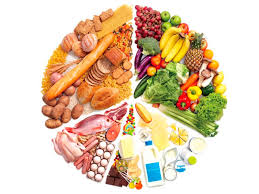Souvenir Sheet: Irrigation Project "Great Man-made River" (Libya 1998)
Irrigation Project "Great Man-made River" (Libya 1998)
01 July (Libya ) within release Irrigation Project "Great Man-made River" goes into circulation Souvenir Sheet Irrigation Project "Great Man-made River" face value 2,000 Libyan dirham
| Souvenir Sheet Irrigation Project "Great Man-made River" in catalogues | |
|---|---|
| Michel: | Mi: LY BL150 |
Souvenir Sheet is square format.
Also in the issue Irrigation Project "Great Man-made River":
- Stamp - Irrigation Project "Great Man-made River" face value 400;
- Stamp - Irrigation Project "Great Man-made River" face value 2,000;
- Mini Sheet - Irrigation Project "Great Man-made River" face value 6*300;
- Souvenir Sheet - Irrigation Project "Great Man-made River" face value 2,000;
- Stamp - Irrigation Project "Great Man-made River" face value 300;
- Mini Sheet - Irrigation Project "Great Man-made River" face value 6*400;
Souvenir Sheet Irrigation Project "Great Man-made River" it reflects the thematic directions:
Food is any substance consumed by an organism for nutritional support. Food is usually of plant, animal, or fungal origin and contains essential nutrients such as carbohydrates, fats, proteins, vitamins, or minerals. The substance is ingested by an organism and assimilated by the organism's cells to provide energy, maintain life, or stimulate growth. Different species of animals have different feeding behaviours that satisfy the needs of their metabolisms and have evolved to fill a specific ecological niche within specific geographical contexts.
A hand is a prehensile, multi-fingered organ located at the end of the forearm or forelimb of primates such as humans, chimpanzees, monkeys, and lemurs. A few other vertebrates such as the koala (which has two opposable thumbs on each "hand" and fingerprints remarkably similar to human fingerprints) are often described as having "hands" instead of paws on their front limbs. The raccoon is usually described as having "hands" though opposable thumbs are lacking.
A map is a symbolic depiction emphasizing relationships between elements of some space, such as objects, regions, or themes. Many maps are static, fixed to paper or some other durable medium, while others are dynamic or interactive. Although most commonly used to depict geography, maps may represent any space, real or imagined, without regard to context or scale, such as in brain mapping, DNA mapping, or computer network topology mapping. The space being mapped may be two dimensional, such as the surface of the earth, three dimensional, such as the interior of the earth, or even more abstract spaces of any dimension, such as arise in modeling phenomena having many independent variables. Although the earliest maps known are of the heavens, geographic maps of territory have a very long tradition and exist from ancient times. The word "map" comes from the medieval Latin Mappa mundi, wherein mappa meant napkin or cloth and mundi the world. Thus, "map" became the shortened term referring to a two-dimensional representation of the surface of the world.



